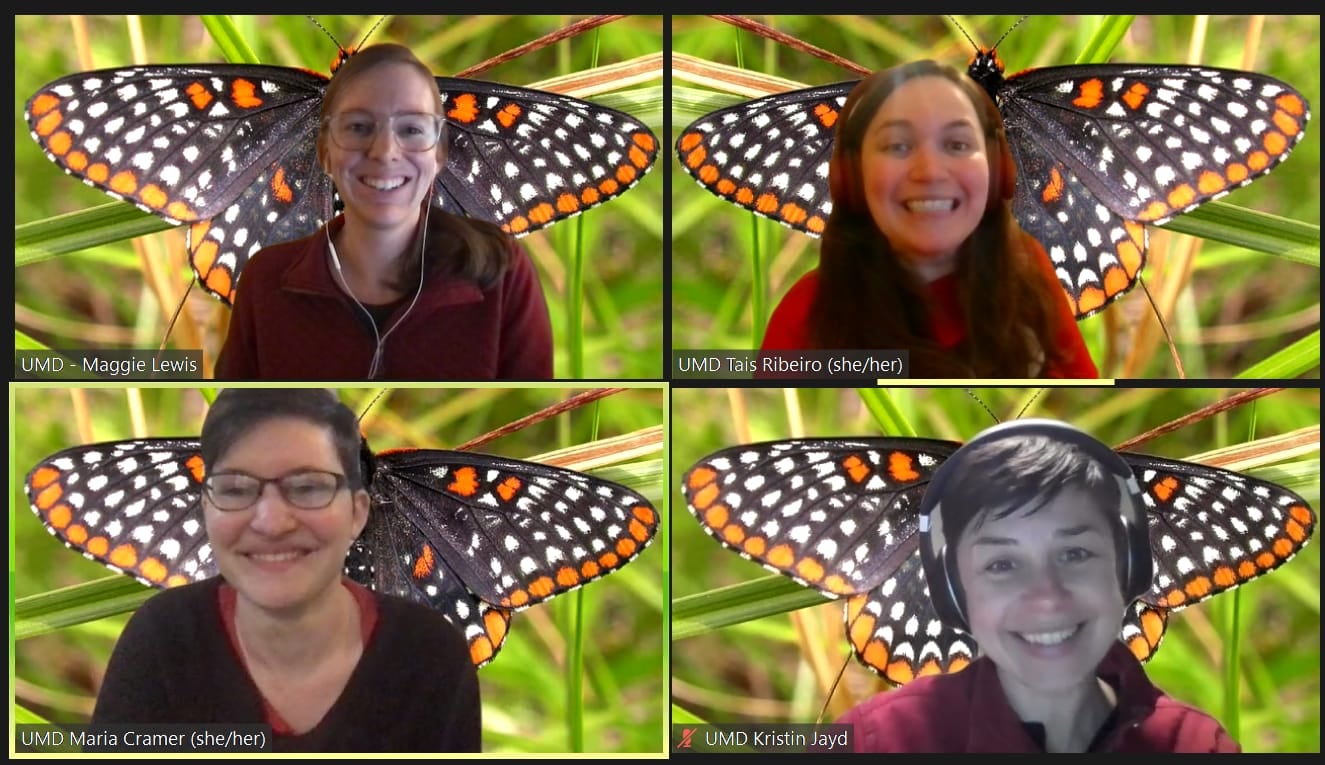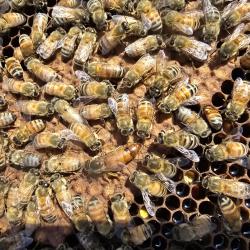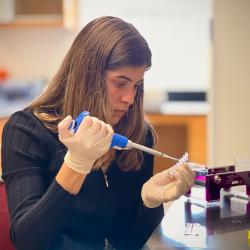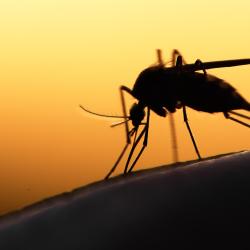UMD Grad Students to Showcase Their Insect Knowledge at National Entomology Games
Terp team placed second in the region and earned a spot at the national competition this fall
What virus is the only tick-borne flavivirus known to occur naturally in North America? How many pairs of wax glands does a worker honey bee have on its abdomen?
These are the types of questions University of Maryland entomology graduate students Maria Cramer, Kristin Jayd, Demian Nuñez and Taís Ribeiro studied for months to prepare to compete in the eastern region’s Entomology Games in March 2021.
The Entomology Games is a trivia competition where four-student teams from competing universities go head-to-head answering questions to test their knowledge. However, instead of being quizzed on traditional trivia topics like music or movies, the contestants show off their entomological expertise by answering questions about insects.
Contestants in the Entomology Games would know the answers to the questions posed at the beginning of this article: Powassan virus is the only tick-borne flavivirus known to occur naturally in North America and a worker honey bee has four pairs of wax glands on its abdomen.
UMD’s team—known as the Checkerspots—was named after Maryland’s official state insect, the Baltimore Checkerspot butterfly. The Checkerspots earned second place in the eastern regional competition, with the help of Maggie Lewis, an entomology graduate student and a member of last year’s team, who stood in for Nuñez, who could not compete due to personal reasons. With their win, the Checkerspots advanced to the national competition, which will be held at the Entomological Society of America’s (ESA) national meeting in Denver in November.
“It was really exciting when we learned we were going to compete at nationals,” Cramer said. “After a long game, it was great to know we made it to the next level.”
To prepare for the local competition, which took place virtually due to COVID-19, the Checkerspots held weekly Zoom practice sessions with questions created by UMD Entomology Associate Professor Kelly Hamby, who serves as the team’s coach.
“We decided to practice on Mondays at 9 a.m. for some reason, which shows how into this we are,” Ribeiro said. “We ask each other the quiz questions and deliberate, and as the team captain, I’m responsible for writing down the answer that we would send to the judges.”
Competitors have to know a wide variety of insect information like taxonomy and physiology and ways that entomology is applied in day-to-day life, as well as information about the ESA itself.
“We all have a lot of insect information in our brains and we come together and hope that four brains are worth more than one,” Jayd said.
When a team doesn’t know the answer to a question, guessing is encouraged, which creates opportunities to have a lot of fun with the answers. The Checkerspots typically go for humor when they don’t know the correct response.
“There’s a famous entomologist named Snodgrass and another famous one named Wigglesworth, so whenever we don’t have an answer, we usually try to come up with something funny using those two names,” Cramer said.
Once the semester is over and the team members have more free time, the Checkerspots will get back to practicing to prepare for the national competition, which is expected to be in person.
“If the competition is in person, then we will have to figure out a different way to practice to make sure we prepare for things like using a buzzer,” Ribeiro said. “But a lot of the practice will still be the same asking and answering questions.”
Regardless of where they compete, for the Checkerspots this has been more than just a competition, it’s been a learning experience unlike any other and they’ve enjoyed every minute of it.
“Practices are so much fun. We end up laughing together most of the time and really enjoying ourselves and learning about entomology,” Cramer said. “It’s basically the most fun thing in the whole world.”
###
Media Relations Contact: Chelsea Torres, 301-405-5204, cctorres@umd.edu
University of Maryland
College of Computer, Mathematical, and Natural Sciences
2300 Symons Hall
College Park, MD 20742
www.cmns.umd.edu
@UMDscience
About the College of Computer, Mathematical, and Natural Sciences
The College of Computer, Mathematical, and Natural Sciences at the University of Maryland educates more than 9,000 future scientific leaders in its undergraduate and graduate programs each year. The college's 10 departments and more than a dozen interdisciplinary research centers foster scientific discovery with annual sponsored research funding exceeding $200 million.








